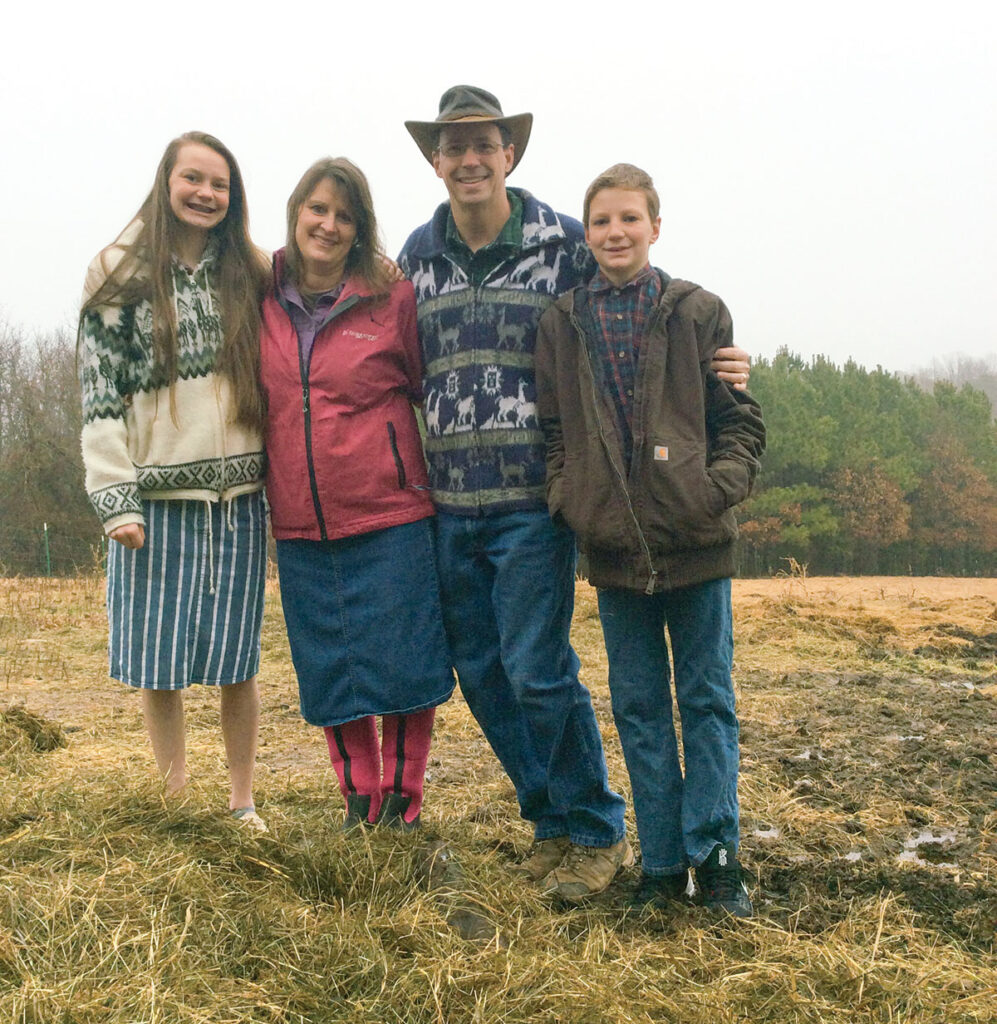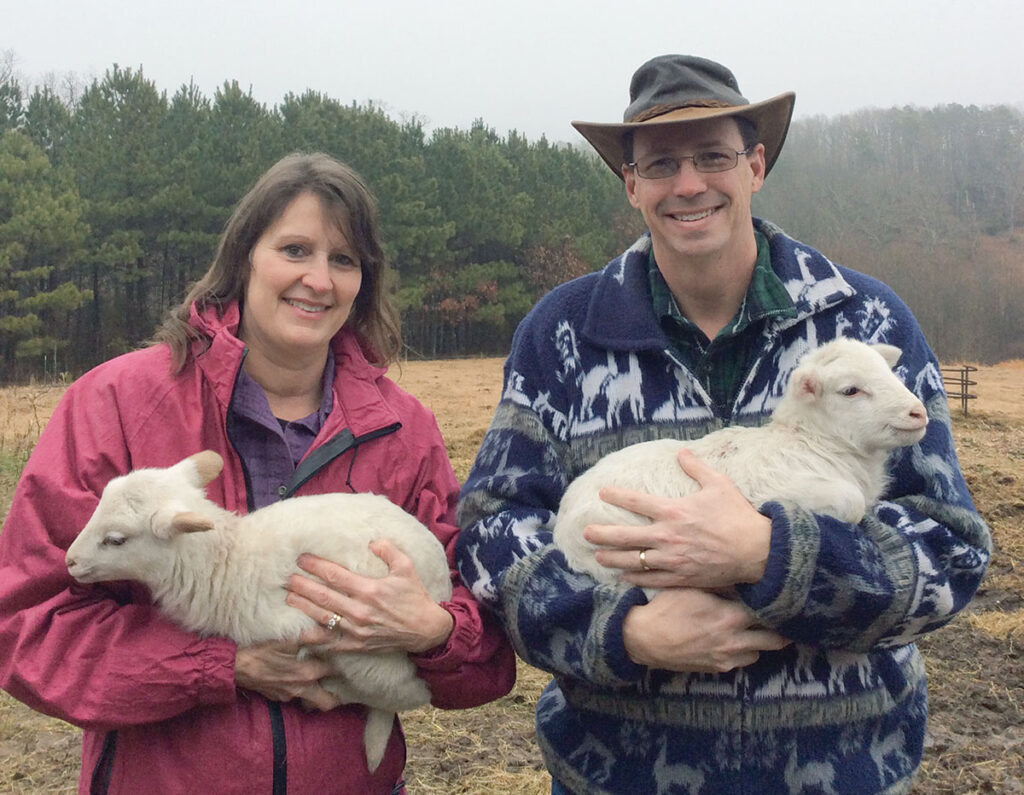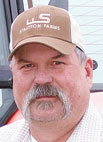
Wilson Ranch started with a cow/calf operation, but has grown to much more
Rob Wilson grew up in the country, where his folks had a large garden. He began selling produce on street corners when he was 10 and joined FFA in high school, where he developed a passion for cattle and agronomy.
Rob went to dental school, as his father and grandfather had before him. While earning a degree in general dentistry in Memphis, Tenn., he met his future wife Nan at an inner-city ministry. Soon after they married in 1994, Rob became a naval officer. He believed military service was an appropriate way for him and most other males to serve the nation while also providing extensive dental postgraduate training in his field. Another of Rob’s roles is serving as pastor for a local Spanish church.
Though Nan was a city girl, both Rob and Nan wanted to start a farm with the intent of using grass- and hay-fed cattle as tools to help them raise their six children, now ranging from 12 to 25 years of age.
“Early on I knew living on a farm teaches all the lessons children need to succeed regardless of their eventual profession, and the farm’s evolution, was and is determined by our children’s interests,” Rob said.
Rob believes the Lord’s hand formed Wilson Ranch. Originally, he and Nan were looking for 40 acres as home to a few cows and a horse. Then people from his church told him about an 80-acre property located at the end of a country road that had both city water and pasture. Wilson Ranch began with cattle, but through the years added land, as well as dairy and sheep herds in accommodating their children’s varied interests.
“Nan is the bookkeeper, chauffeur, caretaker, instructor and steward for the farm, as well as a pastor’s wife, church pianist and children’s and women’s Bible class teacher,” Rob explained. “While she has helped with almost everything, she prefers working behind the scenes and is indispensable and deeply appreciated.”
A current major project is the development of infrastructure for a transition to a multi-species operation by land clearing and fence building. Initially, multi-species operations kept each species in separate pastures. Animals were then rotated on a set pattern to promote soil health, to limit parasite issues and to meet the animals’ differing mineral needs. Recent research, however, indicates that mixing the species can provide the same results with the convenience of moving animals to different pastures at the same time rather than moving each species separately in a set pattern. Importantly, Katahdin sheep tolerate copper, a necessary mineral for cattle but not compatible with other animals such as goats. When completed, the farm will have 275 pasture acres though the Wilson’s own an additional 150.
The Wilson cattle herd is made up of heritage Aberdeen Angus, a breed originating in Scotland during the 16th century. Rob’s childhood experiences with cattle in the 1970s created an image in his mind of what an ideal Angus should look like. It was an image of the old Scottish breed.
“I remember Angus being short, wide and deep,” Rob said. “Through the years genetics have been altered to create an animal with a show animal phenotype.”
One day, Gerald Fry, a well-known and respected speaker, gave a lecture for church members at Rob and Nan’s house. During that lecture, Rob saw a picture of exactly what he remembered. Unfortunately, the original Aberdeen Angus breed was dying out. Rob’s goal is to save the Old World Black Cattle. He found an aging, all female herd in Rhode Island and semen stored at the University of Maryland, as well as 20 females in Scotland, with semen from the Scottish Milk Board. DNA testing was done to ensure the animals were not commercial but the original polled cattle raised in a closed herd. The Wilson’s now have 60 females bred by two bulls.
“Our goal is to preserve the purity and production of the Old World Black Cattle as a breed,” Rob said. “We want a sustainable economic and ecological system that promotes healthy land and animals for the benefit of both producers and consumers.”
The first addition to the Wilson operation was the result of their oldest son wanting to milk and show dairy animals. He started with Red Devons. One day Gerald, now a friend, asked if the Wilsons would babysit a Jersey cow. She produced twice as much milk as the Red Devons and had the popular A/2-A/2 genetic marker.
Then Gerald found Jersey semen in New Zealand with the same marker, and Rob used some as part of developing their now 25-head dairy herd.
Later, the eldest daughter was interested in sheep and introduced Katahdins to the Wilson Ranch. Katahdin’s were chosen for their gentle temperament and parasite resistance, as well as not having to be sheared. The flock started with 2 lambs, a 7-year-old ewe and a ram. Now, however, the registered herd has 60 females with plans to increase the flock to 100.
“We are actively looking for a ‘Joseph’ to serve as a farm manager because we are growing and will continue to grow,” Rob said.
Culls are marketed off the farm, with everything else sold on site using word-of-mouth and name recognition coming from Gerald continuing group presentations until he passed three years ago. Breeding stock includes registered bulls, rams and ewes. Semen from cattle and Katahdins is sold nationwide, with milk sold to locals. USDA-inspected cuts of grass-fed lamb and beef are available, and bred heifers will be coming soon.

The family is thriving. One son is applying to dental school, while another is applying to medical school and yet another is graduating from veterinary school. The remaining children are still at home contributing in the development and attainment of their ranching and life goals.
“The concept behind the farm is producing a legacy for our children. All the children have been happily involved with farming while learning the life skills and ethics Nan and I hoped for,” Rob confided. “Our end goal is to glorify the Lord with everything we do as we provide optimum food sources for our community and customers.”






